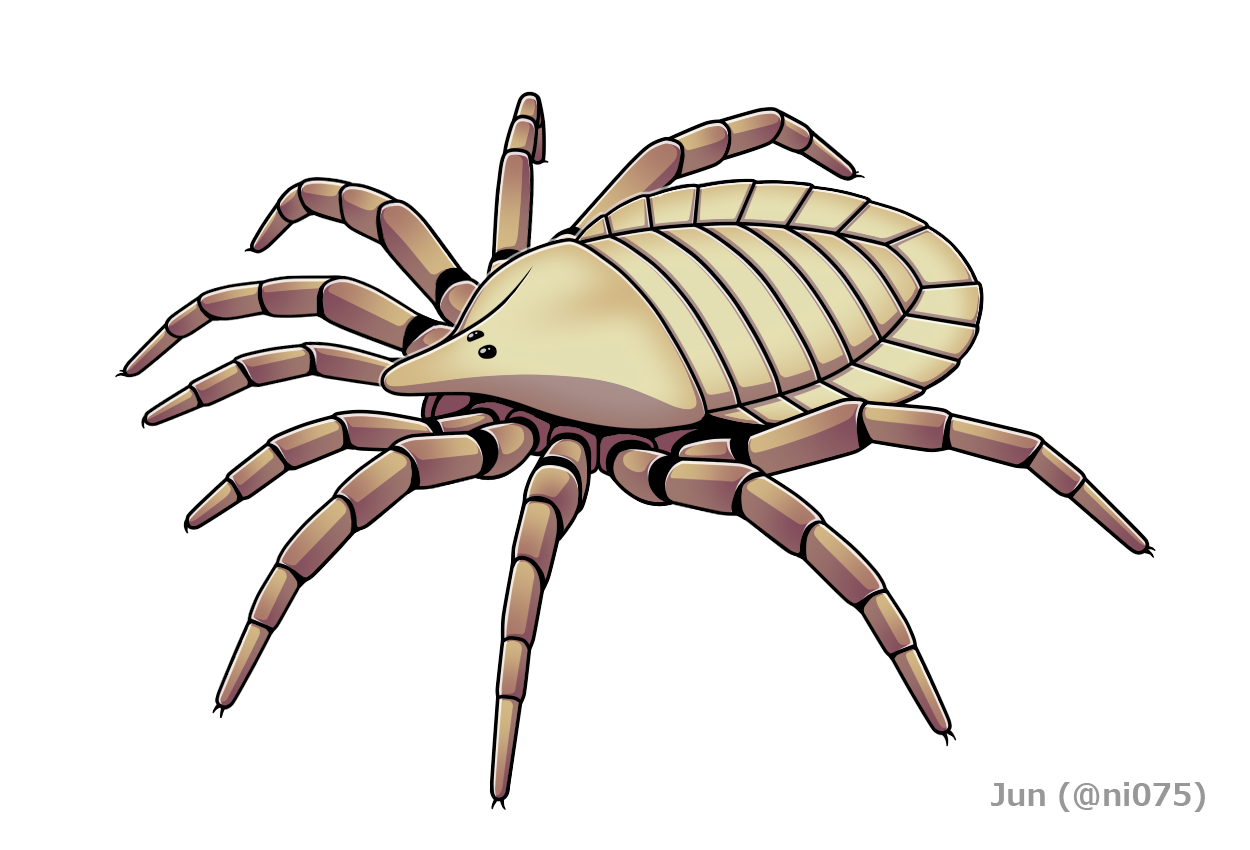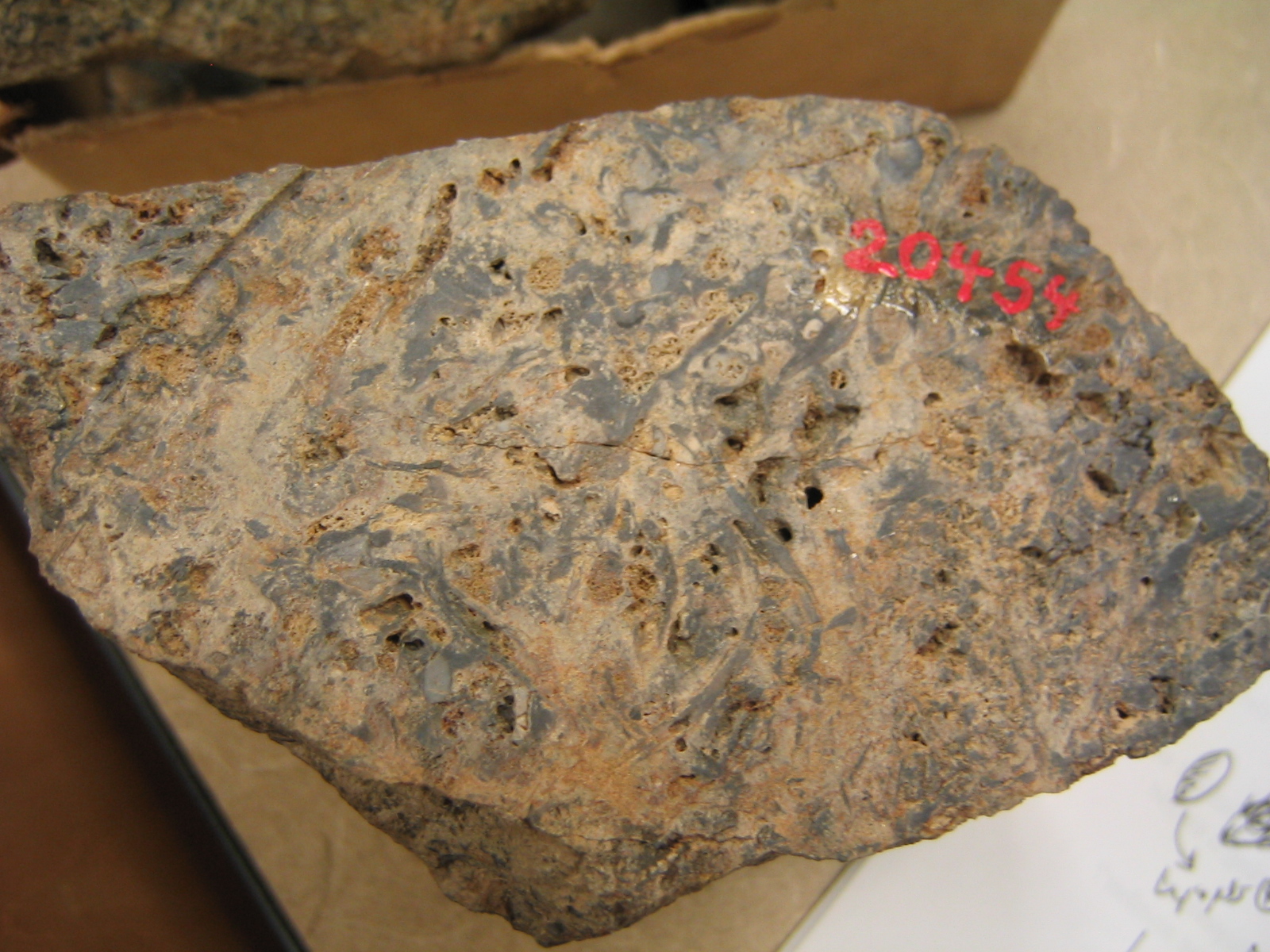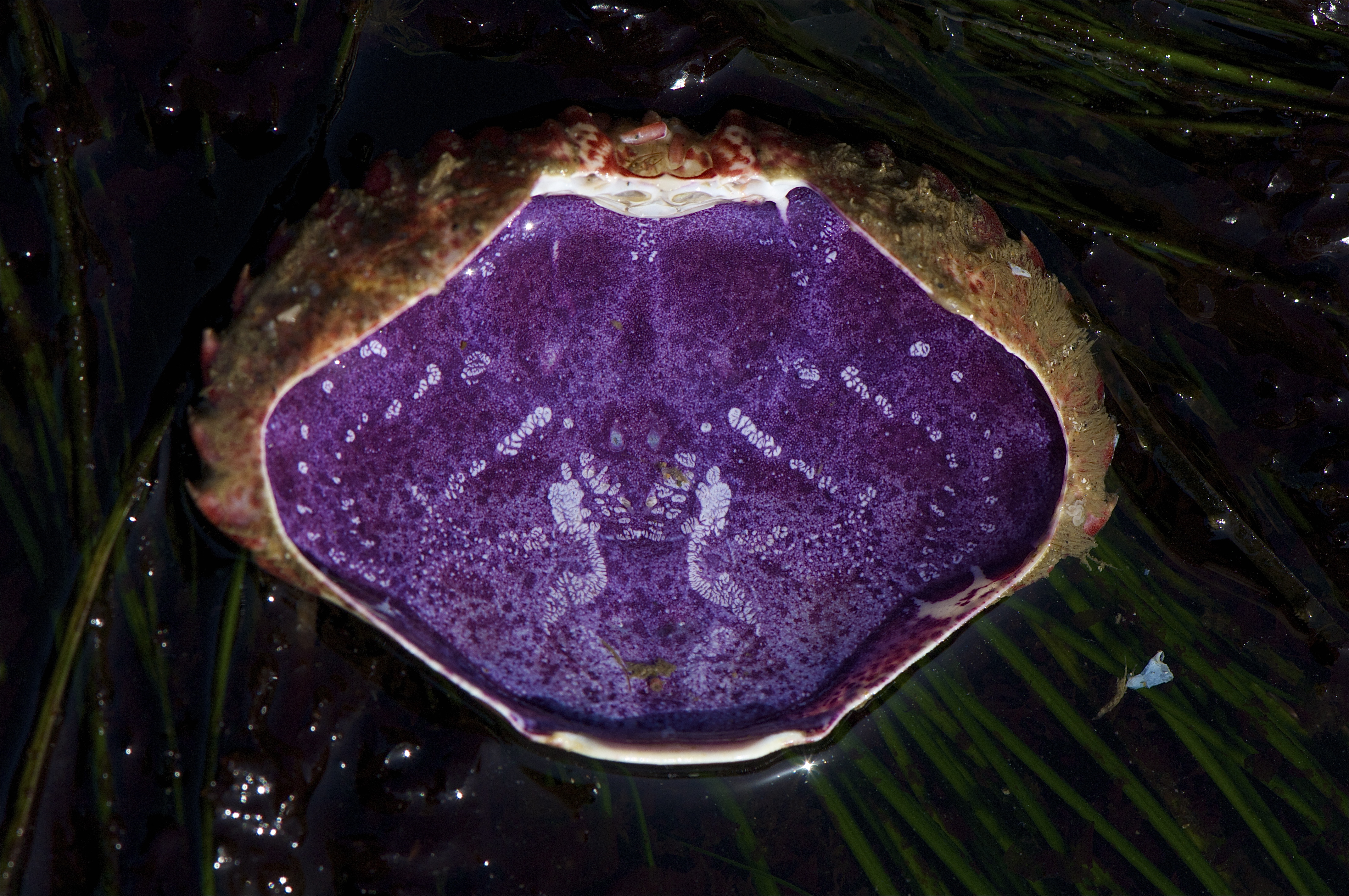|
Book Lung
A book lung is a type of respiration organ used for atmospheric gas-exchange that is present in many arachnids, such as scorpions and spiders. Each of these organs is located inside an open, ventral-abdominal, air-filled cavity (atrium) and connects with its surroundings through a small opening for the purpose of respiration. Structure and function Book lungs are not related to the lungs of modern land-dwelling vertebrates. Their name instead describes their structure and purpose as a case of convergent evolution. Stacks of alternating air pockets and tissue filled with hemolymph give them an appearance similar to a "folded" book. Their number varies from just one pair in most spiders to four pairs in scorpions. The unfolded "pages" (plates) of the book lung are filled with hemolymph. The folds maximize the surface exposed to air, and thereby maximize the amount of gas exchanged with the environment. In most species, no motion of the plates is needed to facilitate this ki ... [...More Info...] [...Related Items...] OR: [Wikipedia] [Google] [Baidu] |
Spin Vent Diag
Spin or spinning most often refers to: * Spin (physics) or particle spin, a fundamental property of elementary particles * Spin quantum number, a number which defines the value of a particle's spin * Spinning (textiles), the creation of yarn or thread by twisting fibers together, traditionally by hand spinning * Spin (geometry), the rotation of an object around an internal axis * Spin (propaganda), an intentionally biased portrayal of something Spin, spinning or spinnin may also refer to: Physics and mathematics * Spin group, Spin(''n''), a particular double cover of the special orthogonal group SO(''n'') ** the corresponding spin algebra, \mathfrak(n) * Spin tensor, a tensor quantity for describing spinning motion in special relativity and general relativity * Spin (aerodynamics), autorotation of an aerodynamically stalled aeroplane * SPIN bibliographic database, an indexing and abstracting service focusing on physics research Textile arts * Spinning (polymers), a process for ... [...More Info...] [...Related Items...] OR: [Wikipedia] [Google] [Baidu] |
Tetrapulmonata
Tetrapulmonata is a Taxonomic rank, non-ranked Order (biology), supra-ordinal clade of arachnids. It is composed of the Extant taxon, extant orders Uropygi (whip scorpions), Schizomida (short-tailed whip scorpions), Amblypygi (tail-less whip scorpions) and Spider, Araneae (spiders). It is the only supra-ordinal group of arachnids that is Resampling (statistics), strongly supported in molecular phylogenetic Research, studies. Two extinct orders are also placed in this clade, Haptopoda and Uraraneida. In 2016, a newly described fossil arachnid, ''Idmonarachne'', was also included in the Tetrapulmonata; it has not been assigned to an order. Etymology It receives its International Code of Zoological Nomenclature, name from the presence of paired book lungs occupying the second and third opisthosomal segments, although the posterior pair is absent in Schizomida and most Araneomorphae, araneomorph spiders. Previous synonym (taxonomy), synonyms of this lineage are rejected; "Caulogastra ... [...More Info...] [...Related Items...] OR: [Wikipedia] [Google] [Baidu] |
Tachypleus Tridentatus Cat Ba 2
''Tachypleus'' is a genus of south, southeast and east Asian horseshoe crabs in the family Limulidae. Species There are two extant (living) species: * '' Tachypleus gigas'' (Müller, 1785) * '' Tachypleus tridentatus'' ( Leach, 1819) And two extinct species only known from fossil. * '' Tachypleus decheni'' (Zincken, 1862) Upper Eocene Domsen Sands, Germany * '' Tachypleus syriacus'' (Woodward, 1879) Upper Cretaceous (Cenomanian The Cenomanian is, in the International Commission on Stratigraphy's (ICS) geological timescale, the oldest or earliest age (geology), age of the Late Cretaceous epoch (geology), Epoch or the lowest stage (stratigraphy), stage of the Upper Cretace ...) Haqel and Hjoula Konservat-Lagerstatten, Lebanon References External links * Xiphosura Extant Cenomanian first appearances Chelicerate genera Taxonomy articles created by Polbot {{Chelicerata-stub ... [...More Info...] [...Related Items...] OR: [Wikipedia] [Google] [Baidu] |
Devonian
The Devonian ( ) is a period (geology), geologic period and system (stratigraphy), system of the Paleozoic era (geology), era during the Phanerozoic eon (geology), eon, spanning 60.3 million years from the end of the preceding Silurian period at million years ago (Megaannum, Ma), to the beginning of the succeeding Carboniferous period at Ma. It is the fourth period of both the Paleozoic and the Phanerozoic. It is named after Devon, South West England, where rocks from this period were first studied. The first significant evolutionary radiation of history of life#Colonization of land, life on land occurred during the Devonian, as free-spore, sporing land plants (pteridophytes) began to spread across dry land, forming extensive coal forests which covered the continents. By the middle of the Devonian, several groups of vascular plants had evolved leaf, leaves and true roots, and by the end of the period the first seed-bearing plants (Pteridospermatophyta, pteridospermatophyt ... [...More Info...] [...Related Items...] OR: [Wikipedia] [Google] [Baidu] |
Rhynie Chert
The Rhynie chert is a Lower Devonian Sedimentary rock, sedimentary deposit exhibiting extraordinary fossil detail or completeness (a Lagerstätte). It is exposed near the village of Rhynie, Aberdeenshire, Scotland; a second unit, the Windyfield chert, is located some 700 m away. The Rhynie chert contains exceptionally preserved plant, fungus, lichen and animal material preserved in place by an overlying Volcanic rock, volcanic deposit. The bulk of the Devonian fossil bed consists of primitive plants (which had xylem, water-conducting cells and spores, sporangia, but no true leaf, leaves), along with arthropods, lichens, algae and fungi. This fossil bed is remarkable for two reasons. First, the age of the site (Pragian, Early Devonian, formed about ) places it at an early stage in the colonisation of land. Second, these cherts are famous for their exceptional state of ultrastructure, ultrastructural preservation, with individual cell walls easily visible in polished specimen ... [...More Info...] [...Related Items...] OR: [Wikipedia] [Google] [Baidu] |
Trigonotarbid
The Order (biology), order Trigonotarbida is a group of extinct arachnids whose fossil record extends from the late Silurian to the early Permian (Pridoli epoch, Pridoli to Sakmarian).Dunlop, J. A., Penney, D. & Jekel, D. 2020A summary list of fossil spiders and their relatives In World Spider Catalog. Natural History Museum Bern, online at http://wsc.nmbe.ch , version 20.5 These animals are known from several localities in Europe and North America, as well as a single record from Argentina. Trigonotarbids can be envisaged as spider-like arachnids, but without silk-producing spinnerets. They ranged in size from a few millimetres to a few centimetres in body length and had segmented abdomens (opisthosoma), with the dorsal exoskeleton (Tergum, tergites) across the backs of the animals' abdomens, which were characteristically divided into three or five separate plates. Probably living as predators on other arthropods, some later trigonotarbid species were quite heavily armoured and pro ... [...More Info...] [...Related Items...] OR: [Wikipedia] [Google] [Baidu] |
Hemocyanin
Hemocyanins (also spelled haemocyanins and abbreviated Hc) are proteins that transport oxygen throughout the bodies of some invertebrate animals. These metalloproteins contain two copper atoms that reversibly bind a single oxygen molecule (O2). They are second only to hemoglobin in frequency of use as an oxygen transport molecule. Unlike the hemoglobin in red blood cells found in vertebrates, hemocyanins are not confined in blood cells, but are instead suspended directly in the hemolymph. Oxygenation causes a color change between the colorless Cu(I) deoxygenated form and the blue Cu(II) oxygenated form. Species distribution Hemocyanin was first discovered in '' Octopus vulgaris'' by Leon Fredericq in 1878. The presence of copper in molluscs was detected even earlier by Bartolomeo Bizio in 1833. Hemocyanins are found in the Mollusca and Arthropoda, including cephalopods and crustaceans, and utilized by some land arthropods such as the tarantula '' Eurypelma californicum'' ... [...More Info...] [...Related Items...] OR: [Wikipedia] [Google] [Baidu] |
Solifugae
Solifugae is an Order (biology), order of Arachnid, arachnids known variously as solifuges, sun spiders, camel spiders, and wind scorpions. The order includes more than 1,000 described species in about 147 genus, genera. Despite the common names, they are neither true spiders (order Araneae), nor true scorpions (order Scorpiones). Most species of solifuges live in dry climates and feed opportunistically on ground-dwelling arthropods and other small animals. The largest species grow to a length of , including legs. A number of urban legends exaggerate the size and speed of solifuges, and their potential danger to humans, which is negligible. Etymology The order's name is derived from the Latin ''sol'' meaning "sun" and ''fugere'' meaning "to flee". Put together, it means "those that flee from the sun". These animals have a number of common names, including sun spiders, wind scorpions, wind spiders, red romans, and camel spiders. In Afrikaans, they are known as ''haarskeerders'' ("h ... [...More Info...] [...Related Items...] OR: [Wikipedia] [Google] [Baidu] |
Ricinulei
Ricinulei is a small order of arachnids. Like most arachnids, they are predatory; eating small arthropods. They occur today in west-central Africa ('' Ricinoides'') and the Americas ('' Cryptocellus'' and '' Pseudocellus'') from Brazil to southern Texas, where they inhabit either leaf-litter or caves. As of 2022, 103 extant species of ricinuleids have been described worldwide, all in the single family Ricinoididae. Due to their obscurity they do not have a proper common-name, though in academic literature they are occasionally referred to as hooded tickspiders. In addition to the three living genera, Ricinulei has a fossil-record spanning over 300 million years, including fossils from the Late Carboniferous of Euramerica and the Cretaceous Burmese amber. Anatomy and physiology The most important general account of ricinuleid anatomy remains the 1904 monograph by Hans Jacob Hansen and William Sørensen. Useful further studies can be found in, e.g., the work of Pittard and Mitche ... [...More Info...] [...Related Items...] OR: [Wikipedia] [Google] [Baidu] |
Pseudoscorpion
Pseudoscorpions, also known as false scorpions or book scorpions, are small, scorpion-like arachnids belonging to the order Pseudoscorpiones, also known as Pseudoscorpionida or Chelonethida. Pseudoscorpions are generally beneficial to humans because they prey on Tineola bisselliella, clothes moth larvae, Dermestidae, carpet beetle larvae, Psocoptera, booklice, ants, mites, and small Diptera, flies. They are common in many environments, but they are rarely noticed due to their small size. When people see pseudoscorpions, especially indoors, they often mistake them for ticks or small spiders. Pseudoscorpions often carry out phoresis, a form of commensalism in which one organism uses another for the purpose of transport. Characteristics Pseudoscorpions belong to the class Arachnida. They are small arachnids with a flat, pear-shaped body, and pincer-like pedipalps that resemble those of scorpions. They usually range from in length.Pennsylvania State University, DepartmentEntomol ... [...More Info...] [...Related Items...] OR: [Wikipedia] [Google] [Baidu] |
Acarina
Mites are small arachnids (eight-legged arthropods) of two large orders, the Acariformes and the Parasitiformes, which were historically grouped together in the subclass Acari. However, most recent genetic analyses do not recover the two as each other's closest relative within Arachnida, rendering the group invalid as a clade. Most mites are tiny, less than in length, and have a simple, unsegmented body plan. The small size of most species makes them easily overlooked; some species live in water, many live in soil as decomposers, others live on plants, sometimes creating galls, while others are predators or parasites. This last type includes the commercially destructive '' Varroa'' parasite of honey bees, as well as scabies mites of humans. Most species are harmless to humans, but a few are associated with allergies or may transmit diseases. The scientific discipline devoted to the study of mites is called acarology. Evolution and taxonomy Mites are not a defined taxon, bu ... [...More Info...] [...Related Items...] OR: [Wikipedia] [Google] [Baidu] |
Microwhip Scorpion
Palpigradi is an order of very small arachnids commonly known as microwhip scorpion or palpigrades. Description Palpigrades belong to the arachnid class. They are the sister group to Solifugae, no more than in length, and averaging . They have a thin, pale, segmented integument, and a segmented abdomen that terminates in a whip-like flagellum. This is made up of 15 segment-like parts, or "articles", and may make up as much as half the animal's length. Each article of the flagellum bears bristles, giving the whole flagellum the appearance of a bottle brush. The carapace is divided into two plates between the third and fourth leg pair of legs. They have no eyes. As in some other arachnids, the first pair of legs is modified to serve as sensory organs, and are held clear of the ground while walking. Often, however, palpigrades use their pedipalps for locomotion, so that the animal appears to be walking on five pairs of legs. But they do not swing in phase with the walking legs, a ... [...More Info...] [...Related Items...] OR: [Wikipedia] [Google] [Baidu] |







